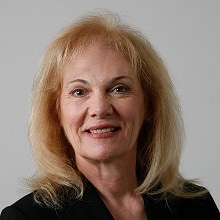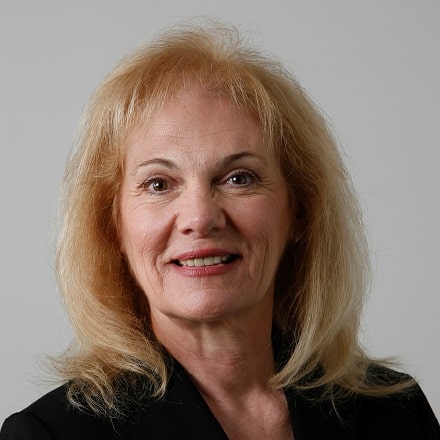Inside Angle
From 3M Health Information Systems
The importance of essential health care during COVID-19
Last time I blogged, I had hoped that by the deadline for my next blog we would have some more effective forms of treatment for COVID-19 or better containment and more testing. Perhaps by my next blog we will be closer to achieving these goals. Fingers crossed!
I’ve been following the concern registered by cardiologists, radiologists, endocrinologists and other physicians regarding the lack of contact with their patients needing essential care. Many have chronic conditions or were mid-treatment for serious illness. Recently, a friend who happens to be a physician shared his concern about his cardiac rehab patients and his endocrinologist colleague’s concern over her challenged diabetic patients who are not receiving care.
Following that discussion, I read a MedPage article by Drs. Saphier and Makary that I found astounding. Titled “A National Standard for Diagnosing COVID-19—Accurate statistics should guide America’s re-opening,” the article states “We should also remember that not everyone goes to a hospital to die. Consider that when New York had approximately 500 confirmed COVID-19 deaths per day, the medical examiner’s office reported that approximately 200 people were found dead at home per day. That’s much higher than the state’s usual pre-COVID rate of 20-30 deaths at home per day. This substantial increase begs the question, are people dying at home from COVID-19 or because they are avoiding medical care for other ailments and dying from lack of proper medical attention?
Are we so terrified of this virus that we refuse to seek essential medical care?
Fear is real. This concern recently “hit home.”
A family member of mine is a building contractor and he is always getting banged and dented. He often uses duct tape to cover a wound and carries on. Recently, he sustained a deep stab-type wound to his knee on a construction site. He thought nothing of it and did the usual duct-tape treatment. Then COVID-19 arrived and folks were told to stay at home. Meanwhile, his wound was not healing. He awoke on a recent Saturday morning to find that not only was his knee red and swollen—so was his entire leg to his ankle. He had a telehealth visit with a doctor who told him to immediately report to the ED where he was given a differential diagnosis of DVT versus cellulitis. He was admitted for five days with acute cellulitis and treated with massive doses of IV antibiotics. He was discharged improved and is following up with his doctor.
Three days later, another family member “did not feel well.” Chest tightness, difficulty breathing and a feeling of overwhelming unease. Even though he has a strong family history of heart disease, he went to an urgent care facility rather than the ED because of concern for COVID-19. He was seen by the urgent care provider and immediately sent to the ED with a myocardial infarction. He was admitted, had a second heart attack before getting a cardiac catherization and stents placed. He was discharged after five days significantly improved.
Both family members were successfully treated in hospital and discharged without contracting the virus. By sharing these personal stories, my hope is those needing essential care will reach out and that more providers encourage patients to do so—even during a pandemic.
Challenging fear
Recently, local hospitals, physicians and dentists in Bergen County, NJ (next door neighbor to NYC) have begun email educational campaigns to reassure their patients that it is safe to come to the hospital or office for essential care unrelated to COVID-19:
“…take steps to safely reopen our doors and restore services, we want to assure you of our ability to deliver care safely. As always, we are here for everyone in our community and your medical needs. Please do not delay getting the care you need. We are doing everything possible to provide care in a safe environment.”
“We understand that you may have some hesitancy about coming to the Emergency Department or scheduling medical appointments for care that you may have delayed. We want to reassure you that all precautions are in place to ensure your health and safety and urge you to seek any necessary urgent and emergent care.”
“We Are Always Here for You; we are seeing patients for emergency treatment. If you have a dental emergency, please call our office”
As fear is contagious, hopefully reassurance is as well. This is not to suggest any behavior that does not meet local quarantine requirements is acceptable, but those needing essential medical, dental and behavioral health care can safely seek it.
A local Bergen County, NJ health system published the following to reassure patients their visits with providers are safe:
- All offices have been reconfigured to meet social distancing guidelines and ensure patients can remain at least six feet from each other
- Scheduled appointments will be staggered to limit patient arrivals and departures
- We will ask all patients to wear a mask or cloth face covering
- All patients will be pre-screened for virus symptoms and have their temperature checked upon arrival
- We will ask our patients to come to their appointments unaccompanied whenever possible
- Patients will be offered an online check-in process with the ability to communicate by text to ensure they have no wait time before being escorted into exam rooms
Telehealth experience
If you are unable to go to the provider’s office, telehealth is being used successfully as a monitoring tool to identify instances when urgent and emergent care is essential. The services are now widely covered by CMS and many other payers as well. Access is available for medical care, behavioral health, physical, occupational, nutritional therapies, audiology, substance abuse, family counseling, etc. Patients without internet access or devices can still schedule a telephone only appointment with their providers. Many practices are embracing telehealth and appointments are available. Being properly monitored goes a long way in avoiding serious complications.
Last week, I had my first telehealth visit with a provider and it was awesome. No sitting in traffic to get to the office and no waiting once I got there. I was called by the medical assistant 15 minutes prior to my appointment and was asked the routine questions usually asked in office. The doctor called me on time, we had our visit, all my questions were answered. Follow up instructions were given, plus I received an email notice from the EHR that my visit notes were available on their portal for my review. What a time saver!
Hopefully, the worldwide healthcare industry is learning valuable lessons as we move through this pandemic. An important lesson is the significant need for comprehensive preparedness planning in health care. That includes educating the population on the importance of staying home and quarantining. We must also educate those who have essential and emergent healthcare needs on how to access care. For now, please call your doctor if you or a family member, neighbor, colleague or community member needs essential care.
Safe care is available.
Barbara Aubry is a senior regulatory analyst with 3M Health Information Systems.
Click here to visit the 3M HIS COVID-19 resource page.
During a pandemic, healthcare information is gathered, studied, and published rapidly by scientists, epidemiologists and public health experts without the usual processes of review. Our understanding is rapidly evolving and what we understand today will change over time. Definitive studies will be published long after the fact. 3M Inside Angle bloggers share our thoughts and expertise based on currently available information.


